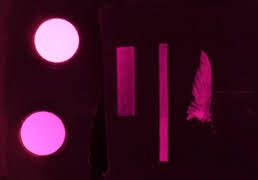
Museum Work
Investigating wing coloration in collaboration with the Burke Museum of Natural History and Culture
As literature grows, we’re starting to understand more and more the role of coloration in sexual selection and behavior, especially with iridescent patches in the hummingbird taxa. We are starting by looking specifically at one patch of iridescent feathers that exists on the underside of the wing and seems to be used for communication (seen as select species' pauses mid-flap while these underwing patches are visible). Hummingbird sight has only been consistently studied in the last few years (Stoddard et al. 2020), suggesting that the fourth optical cone possessed by hummingbirds may allow for vision and signaling in the ultraviolet (UV) spectra. We are investigating what these patches could look like to another hummingbird using a specialized camera, the extensive Burke Museum spread wing collection, and a team of enthusiastic researchers! To aid in location of spread wings within and beyond the museum, I created a R Shiny Wing Finder App to help researchers from all institutions to successfully locate collections and ease in the loan process. Further, I have participated in multiple outreach videos to highlight this project and the role museums play in scientific research.
PI: Alejandro Rico-Guevara
Affiliation: University of Washington & Burke Museum of Natural History and Culture
Undergraduate Researcher: Nora L.
Outreach Video: Virtual Open Door Host at Burke Museum
Project Gallery


